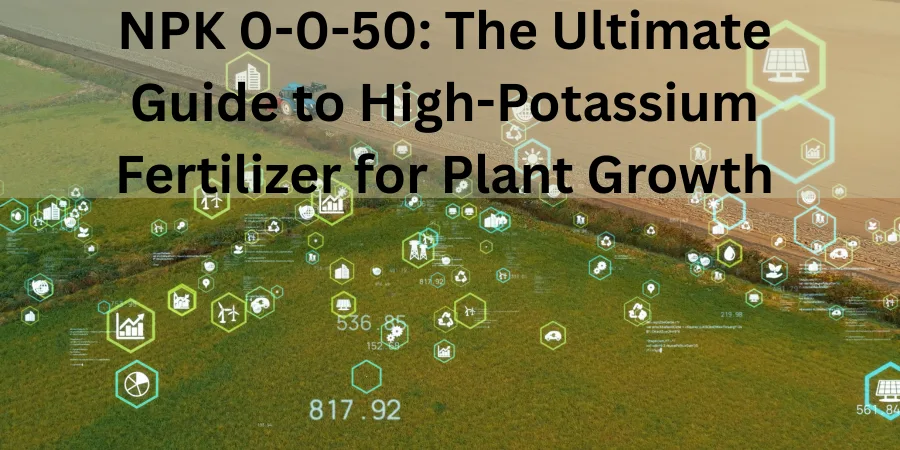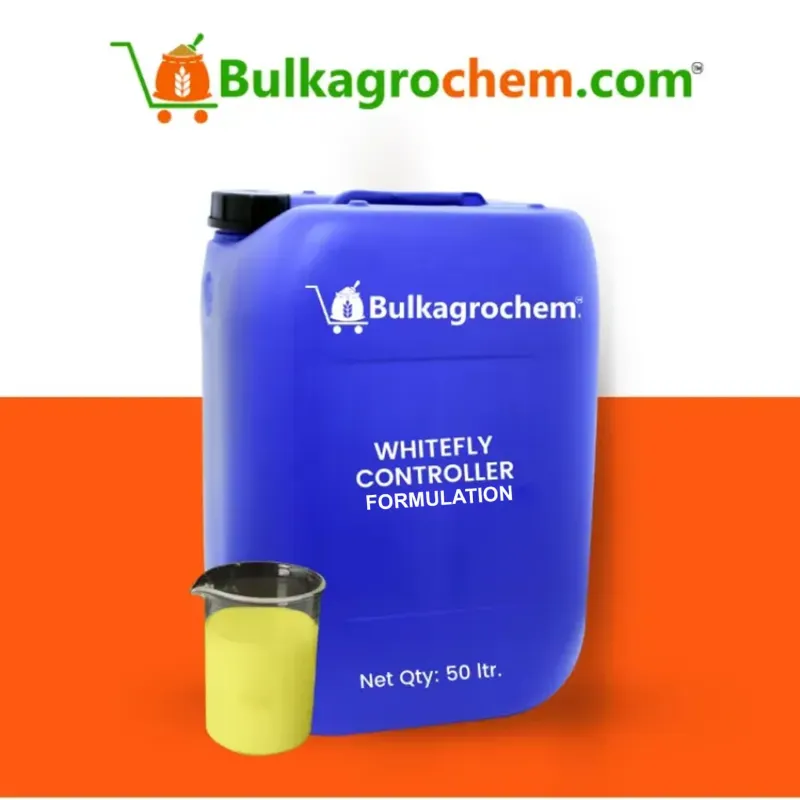Fertilizers play a crucial role in modern agriculture by supplying essential nutrients that plants need for healthy growth. One of the most powerful potassium-based fertilizers available is NPK 0-0-50. This high-potassium fertilizer contains 50% potassium (K₂O) and no nitrogen (N) or phosphorus (P), making it ideal for improving fruit quality, increasing plant stress tolerance, and enhancing overall crop productivity.
If you’re looking to boost the potassium levels in your soil and improve plant resilience, NPK 0-0-50 could be the perfect solution. In this blog, we’ll explore its composition, benefits, application methods, best crops to use it on, and FAQs to help you make an informed decision.
What is NPK 0-0-50 Fertilizer?
NPK 0-0-50 is a potassium sulfate (K₂SO₄)-based fertilizer that provides plants with a high concentration of potassium (K) without adding nitrogen (N) or phosphorus (P). It is often used in agricultural and horticultural applications where plants require a significant potassium boost.
Composition of NPK 0-0-50
Potassium (K₂O): 50% – Essential for plant health, fruit development, and stress resistance.
Sulfur (S): 17% – Improves protein synthesis, enhances nutrient absorption, and supports soil health.
Since it does not contain nitrogen or phosphorus, NPK 0-0-50 is particularly useful when plants already have sufficient levels of these nutrients but need more potassium for better growth and yield.
Why is Potassium Important for Plants?
Potassium is one of the three primary macronutrients (N-P-K) that plants require. While nitrogen promotes leafy growth and phosphorus strengthens roots, potassium plays a key role in overall plant health, metabolism, and fruit production.
Key Benefits of Potassium in Plants:
- Improves flowering and fruit development
- Enhances photosynthesis efficiency
- Strengthens plant resistance to diseases and pests
- Boosts drought and heat tolerance
- Improves nutrient absorption and water retention
A potassium deficiency in plants can lead to yellowing leaves, weak stems, reduced fruit quality, and poor resistance to environmental stress. Using NPK 0-0-50 ensures plants receive the right amount of potassium for optimal growth and yield.
Top Benefits of NPK 0-0-50 Fertilizer
Enhances Fruit and Flower Development
- Essential for fruit-bearing crops like tomatoes, citrus fruits, and grapes.
- Increases fruit size, color, and taste.
Boosts Drought and Stress Tolerance
- Strengthens root systems, improving water absorption.
- Helps plants survive heat, cold, and drought conditions.
Improves Disease and Pest Resistance
- Strengthens plant cell walls, making them less susceptible to infections.
- Reduces vulnerability to fungal diseases and bacterial attacks.
Optimizes Nutrient Absorption
- Enhances uptake of nitrogen and phosphorus, making other fertilizers more effective.
- Works well in sandy and saline soils where potassium leaching is a concern.
Suitable for Chloride-Sensitive Crops
- Unlike potassium chloride (KCl), NPK 0-0-50 is low in chloride, making it safe for sensitive crops like potatoes, beans, and berries.
How to Use NPK 0-0-50 Fertilizer
1. Soil Application
Method: Spread evenly over the soil before planting or during growth stages.
Dosage: 50-100 kg per hectare (adjust based on soil tests).
Best Time: During early flowering and fruiting stages.
2. Foliar Spray (Liquid Application)
Method: Dissolve in water and spray directly on plant leaves.
Dosage: Mix 5-10 grams per liter of water.
Best Time: Early morning or late evening to avoid sunburn.
3. Fertigation (Drip Irrigation)
Method: Apply through irrigation systems for even distribution.
Dosage: 2-5 kg per hectare per application.
Best Time: Use throughout the fruiting stage for better yield.
4. Hydroponics
Method: Add to nutrient solution for soilless cultivation.
Dosage: 100-200 ppm concentration depending on plant type.
Pro Tip: Always conduct a soil test before applying NPK 0-0-50 to avoid over-fertilization, which can damage plants.
Best Crops for NPK 0-0-50 Fertilizer
This high-potassium fertilizer is especially beneficial for fruiting and flowering plants. Some of the best crops include:
Fruit Crops
- Tomatoes
- Citrus fruits (oranges, lemons)
- Bananas
- Grapes
- Apples
- Berries
Vegetable Crops- Potatoes
- Carrots
- Onions
- Peppers
- Cucumbers
Flowering Plants - Roses
- Orchids
- Marigolds
Cash Crops & Field Crops
- Coffee
- Tea
- Sugarcane
- Cotton
Common Mistakes to Avoid When Using NPK 0-0-50
Over-application – Excess potassium can interfere with calcium and magnesium uptake, leading to deficiencies.
Ignoring soil tests – Applying without checking soil potassium levels may lead to nutrient imbalances.
Using on nitrogen-deficient soil – If the soil lacks nitrogen, additional N fertilizers are required.
Applying at the wrong growth stage – Best results come when applied during flowering and fruiting, not early vegetative growth.
FAQs About NPK 0-0-50 Fertilizer
1. Can I use NPK 0-0-50 for all plants?
Yes, but it is especially beneficial for fruiting, flowering, and chloride-sensitive crops.
2. How often should I apply NPK 0-0-50?
It depends on the crop type and soil conditions, but generally once every 2-4 weeks during flowering and fruiting stages.
3. Is NPK 0-0-50 organic?
No, it is a mineral-based synthetic fertilizer, but it is safe and widely used in organic farming practices.
4. What is the best time to apply NPK 0-0-50?
Early morning or late evening to prevent nutrient loss due to heat.
5. Can I mix NPK 0-0-50 with other fertilizers?
Yes, but avoid mixing it with calcium-based fertilizers, as it can cause precipitation.
6. Is NPK 0-0-50 safe for hydroponics?
Yes, it is a great potassium source for hydroponic systems.






